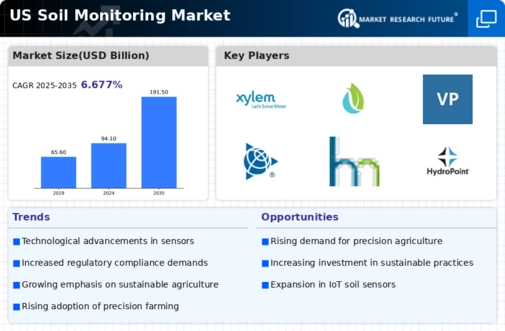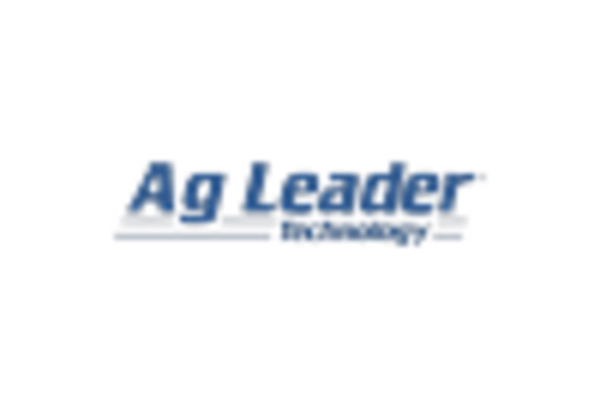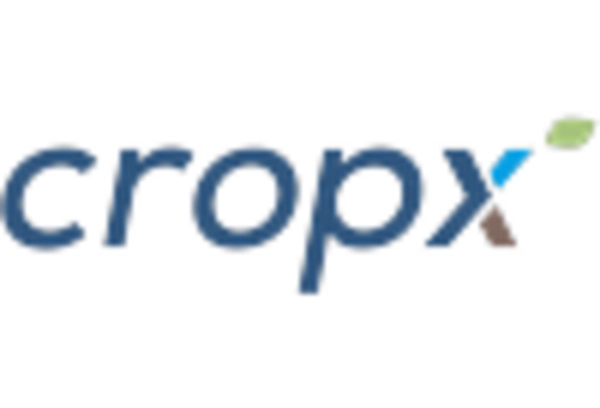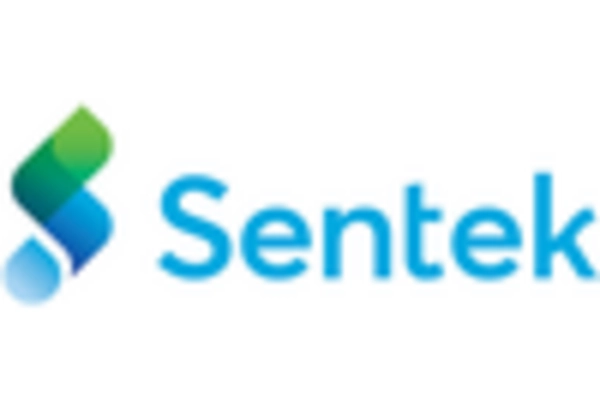Rising Environmental Concerns
Growing environmental concerns are driving the soil monitoring market as stakeholders recognize the importance of soil health in maintaining ecosystem balance. Issues such as soil degradation, erosion, and contamination have prompted a shift towards sustainable land management practices. The soil monitoring market is responding to these challenges by offering solutions that help monitor soil conditions and promote responsible land use. As awareness of environmental issues increases, more agricultural producers are likely to invest in soil monitoring technologies to ensure compliance with environmental regulations and to contribute to conservation efforts.
Government Initiatives and Support
Government initiatives aimed at promoting sustainable agriculture are significantly influencing the soil monitoring market. Various federal and state programs are providing financial incentives for farmers to adopt soil monitoring technologies. For instance, the USDA has allocated substantial funding to support precision agriculture practices, which include soil health assessments. This support is crucial as it encourages farmers to invest in soil monitoring solutions, thereby enhancing soil quality and agricultural output. The soil monitoring market is likely to see increased participation from farmers who are motivated by these government programs, which aim to improve food security and environmental sustainability.
Growing Demand for Organic Farming
The increasing consumer preference for organic produce is influencing the soil monitoring market. As more farmers transition to organic farming practices, the need for effective soil management becomes paramount. Soil monitoring technologies play a crucial role in ensuring that soil conditions meet organic certification standards. The soil monitoring market is likely to see a surge in demand as farmers seek to optimize soil health and fertility without synthetic inputs. This shift towards organic farming not only supports environmental sustainability but also aligns with consumer trends favoring healthier food options.
Increased Agricultural Productivity
The soil monitoring market is experiencing growth due to the rising demand for enhanced agricultural productivity. Farmers are increasingly adopting soil monitoring technologies to optimize crop yields and improve soil health. According to recent data, the adoption of precision agriculture techniques, which include soil monitoring, has led to yield increases of up to 20%. This trend is driven by the need to feed a growing population and the necessity for sustainable farming practices. The soil monitoring market is thus positioned to benefit from these agricultural advancements, as farmers seek to utilize data-driven insights to make informed decisions regarding soil management and crop planning.
Technological Integration in Agriculture
The integration of advanced technologies in agriculture is a key driver for the soil monitoring market. Innovations such as IoT devices, drones, and remote sensing technologies are being utilized to gather real-time data on soil conditions. This technological evolution allows farmers to make timely decisions regarding irrigation, fertilization, and crop rotation. The soil monitoring market is benefiting from this trend, as the demand for smart farming solutions continues to rise. It is estimated that the market for precision agriculture, which heavily relies on soil monitoring, could reach $10 billion by 2027, indicating a robust growth trajectory.

















Leave a Comment